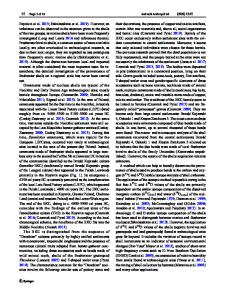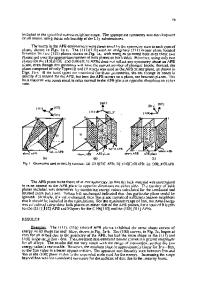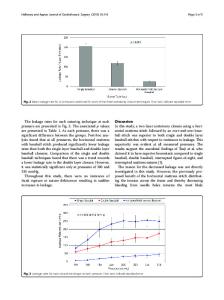An Assessment of the Method Used to Determine Activation Parameters in L1 2 Alloys
- PDF / 297,044 Bytes
- 6 Pages / 414.9 x 643.14 pts Page_size
- 100 Downloads / 334 Views
),
(1)
where 6r, t, 4 are successively the stress rate, the total strain-rate and the plastic strain-rate. M is the elastic modulus of the specimen-testing machine assembly and is of the order of the Young modulus (see § 5). Creep, relaxation and constant strain-rate deformation are defined by the following equations: 6 = 0, k,=
yp,
(2a) (2b)
t=0, 6 =-Mt,
(2c)
KK9.12.1 Mat. Res. Soc. Symp. Proc. Vol. 552 © 1999 Materials Research Society
Note, that the definition of 0 ( Do / aeP at = e, constant) is different from the usual one (0 = Do I at ) . Following the deformation mode, one measures the total deformation versus time, the decrease of the applied stress versus time or the slope of the stress-strain curve. However, the meaningful physical parameter is always the plastic strain rate ý. In the following, all results are expressed in terms of this latter quantity. By definition, logarithmic kinetics (0) is generally expressed with the help of two independent parameters, a characteristic time t. and the initial strain rate ýo, as:
(3a)
£potk t' + t
1
1
tP
tPO
or equivalently by t +- + tiltPO
(3b)
Figure 1 shows, that both the initial plastic strain-rate •0 and the characteristic time tk can be determined in one experiment of creep or relaxation. In the following, the subscripts c and r will apply respectively to creep and relaxation.
1 gp
-1 4po
Figure 1. Method of determination of the initial plastic strain-rate ý0 and of the characteristic time tk.
t In the case of logarithmic creep or relaxation, these results are simply interpreted with the help of either Hart's equation [1] or thermally activated glide theory. a) Hart's equation writes: d In E (4)
=he, +s-
"di P
h =Do / &P and S = Do / Dln are the strain-hardening rate (SHR) and the strain-rate sensitivity (SRS). Although both h and 0 are measures of the SHR, we keep different variables to emphasize that they do not correspond to the same deformation mode. If we assume that h and S are constant during a relaxation or creep experiment, combining equations 1, 2 and 4 gives equation 3 together with:
b)
S, = h~tAýo.
(5a)
S = (M + h)t,.
(5b)
Thermally activated glide theory writes in the case of creep: eP
v,.eAp-
l V
(6a)
and in the case of relaxation gv=V eap-
(6b)
where v, and v, are frequency factors depending on the details of the model [2]. The Vs are the activation volumes. By combining equations 1, 2, 5 and 6 one obtains equation 3 with: KK9.12.2
s=kT
(7) V Therefore, both logarithmic relaxation and logarithmic creep are consistent with either Hart's model or the thermally activated glide model with constant SHR, SRS or activation volume during the transient. EXPERIMENTAL PROCEDURES The polycrystalline Ni 3A1 specimens with a composition of Ni75Al2 5 and Ni 76A124 were compression tested at room temperature (RT) at two different nominal strain-rates of 4.8x10-5 S- and 5.3x10 4 s-1. More details on the specimen specification and preparation are given elsewhere [3]. For creep experiments, the specimens are first loaded in
Data Loading...











